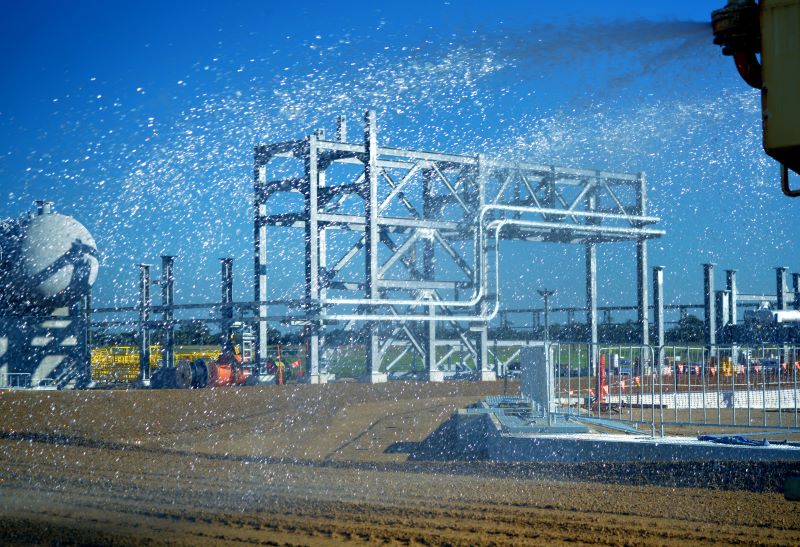Article by Brian Johnstone – Fire Suppression Specialist
What is Deluge Fire Suppression and How Does It Operate?
Deluge fire suppression systems are a network of open sprinkler heads or directional nozzles that are connected by piping that is normally dry. A water supply is held back by a deluge valve, which is operated through the means of a detection system. The detection system is typically electrically actuated by heat, flame or smoke detectors, but can also by actuated through the means of a pneumatic (dry pilot) system, utilizing a separate network of sprinkler heads connected to piping that is pressurized with air. Once a fire is detected through the detection system, the deluge valve is triggered to open and flood the piping with water at which point ALL sprinklers or nozzles attached to the system will discharge water. Deluge systems can be water or also incorporate firefighting foam on high challenge fires.

Where are Deluge Systems Utilized?
Deluge systems are typically utilized in high hazard environments such as power plants, chemical plants and aircraft hangars. Such high hazard environments typically have low flash point flammable and/or combustible liquids present, and a fire can spread rapidly. A deluge system has the ability to rapidly discharge large volumes of water on a fire to extinguish and prevent the spread of fire. In addition to fire suppression, deluge systems are also commonly used as a means to provide exposure protection from an adjacent hazard. Common hazards that are protected with deluge systems are:
- Oil Filled Transformers.
- Flammable Liquid Storage Tanks.
- Aircraft Hangars
- Chemical Processing Areas
- Cooling Towers
- Truck Loading Racks
Why Oliver Fire Protection & Security?
The team at Oliver Fire Protection & Security has the experience and expertise to assist you with deluge systems as well as all forms of fire suppression, alarm and security.

